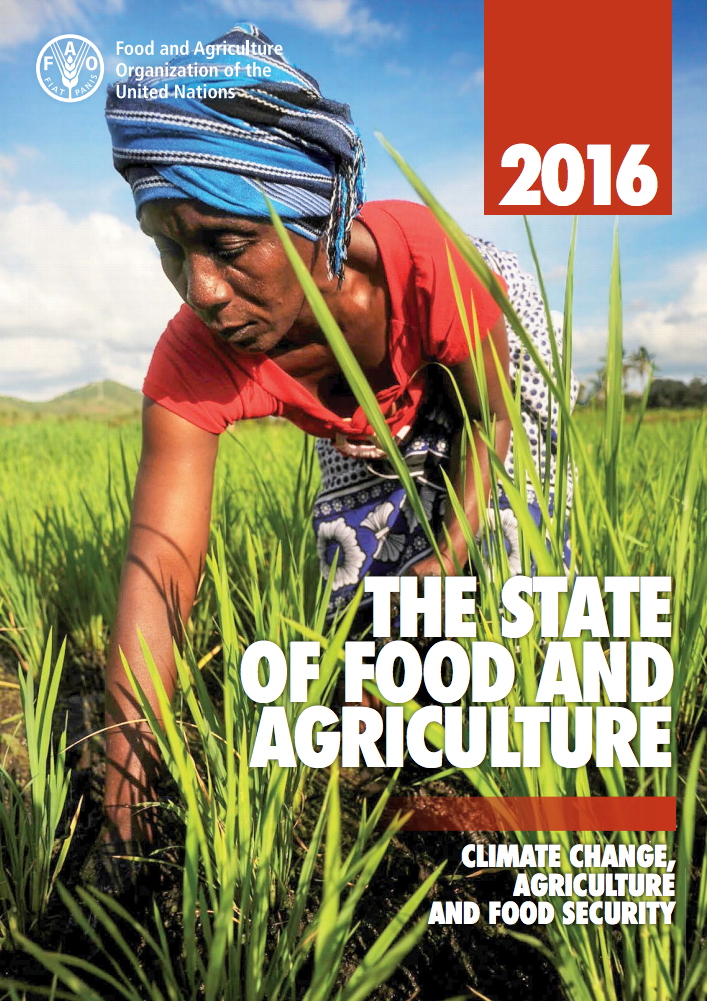The State of Food and Agriculture: Climate Change, Agriculture and Food Security
Resource information
Date of publication
November 2016
Resource Language
ISBN / Resource ID
978-92-5-109374-0
Pages
194
License of the resource
Copyright details
FAO encourages the use, reproduction and dissemination of material in this information
product. Except where otherwise indicated, material may be copied, downloaded and
printed for private study, research and teaching purposes, or for use in non-commercial
products or services, provided that appropriate acknowledgement of FAO as the source
and copyright holder is given and that FAO’s endorsement of users’ views, products or
services is not implied in any way.
All requests for translation and adaptation rights, and for resale and other commercial
use rights should be made via www.fao.org/contact-us/licence-request or addressed
to copyright@fao.org.
product. Except where otherwise indicated, material may be copied, downloaded and
printed for private study, research and teaching purposes, or for use in non-commercial
products or services, provided that appropriate acknowledgement of FAO as the source
and copyright holder is given and that FAO’s endorsement of users’ views, products or
services is not implied in any way.
All requests for translation and adaptation rights, and for resale and other commercial
use rights should be made via www.fao.org/contact-us/licence-request or addressed
to copyright@fao.org.
The Paris Agreement, adopted in December 2015, represents a new beginning in the global effort to stabilize the climate before it is too late. It recognizes the importance of food security in the international response to climate change, as reflected by many countries focusing prominently on the agriculture sector in their planned contributions to adaptation and mitigation. To help put those plans into action, this report identifies strategies, financing opportunities, and data and information needs. It also describes transformative policies and institutions that can overcome barriers to implementation.
Geographical focus


